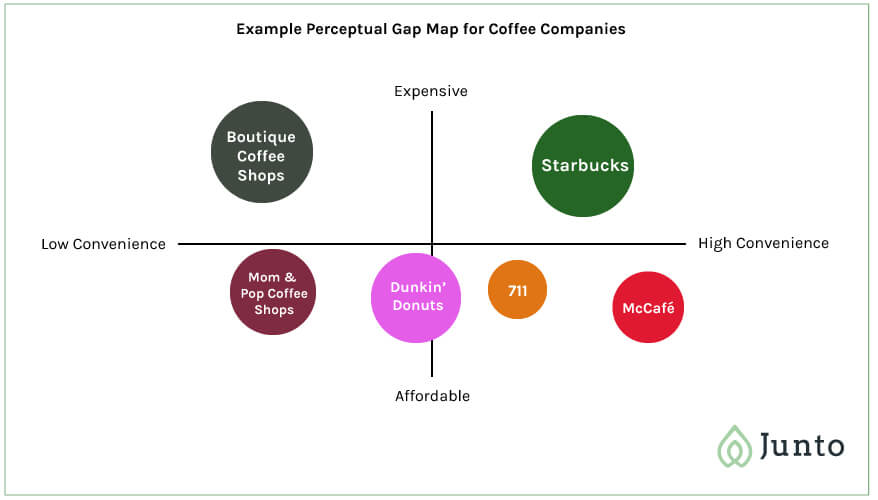What is Brand Marketing? [And Why it Matters]
Table of Contents
- What Defines a Brand?
- The Differences Between Brand and Marketing
- How a Brand is Created
- The Benefits of Brand Marketing
- How to Create or Refine your Brand
When you see a Starbucks sign, you know there’s a consistent, yet, subpar cup of coffee nearby.
But before you go buy that quadruple pump non-fat almond milk pumpkin spice latte, let’s talk about what goes into that brand, as well as many others.
The concept of a “brand” is tossed around like a football at a pick-up game. Rarely coordinated, sometimes well-executed and most times fumbled to the competition. However, executed correctly, a solidified brand that resonates with a target audience can boost trust, create evangelists, and guide internal culture.
If poorly managed or ignored, a bad brand can put your business in a downward spiral with a one-way ticket to bankruptcy.
But all cynical perceptions of America’s favorite coffee shop, aside. Let’s delve a bit deeper into what truly makes a brand in today’s market.
From the ingredients and benefits of a good brand to evaluating your very own, below you’ll find our biggest insights on creating a brand.
What Defines a Brand?
From a consumer perspective? It’s the first thoughts that cross a consumer’s mind when they hear your company name.
But for companies, the task of building and maintaining their reputation takes so much more than what meets the eye.
As you’ve heard from most marketers out there, it’s not just a logo, sexy color palette, and well-tracked sans serif font.
As consumer choices have skyrocketed, companies now focus on ways to differentiate themselves even further through personality, trust, quality, consistency and much more.
You can think of a brand as you would another person, evaluating some of the following questions:
- What are their core values and how do they express them?
- Can I trust them and their products?
- Would I recommend them to friends?
There are literally thousands of ways to position a brand, but the end goal is the same. Determine your market/niche, define a brand strategy and market as accurately as possible to that niche.
The Differences Between Brand and Marketing
You have to solidify a brand before you can market it, but you have to market your brand to solidify it.

Courtesy of Giphy
Confusing… I know.
You see – a brand is a set of perceived ideals, values, thoughts, and feelings that a company has developed through their interactions with target customers.
So how does that differ from marketing?
You should think of a marketing strategy as the approach a company takes to convey their core values, ideals, and anything else they want the market to think about them.
In short, marketing is the medium and the brand is the message.
So the next time you find yourself crafting a brand strategy for the next Uber of vegetarian pizza delivery, be sure to consider how a brand is made.
How Brands are Created
Similar to any other creative process, there’s no right or wrong way to approach the creation of a brand.
Sure, brand marketers could bust out their perceptual gap maps and SWOT analyses to refine their positioning against the competition, but this isn’t the only way.
I’ve seen brands triumph as a mom and pop shop with no sign and a janky HTML website from a decade ago. Subsequently, we’ve all been suckered into the hysteria behind a well-packaged product at a price point that’s three-times any of the competition.
So the truth is, a brand can be crafted with almost any approach. Just so long as the message you’re conveying to your intended market is consistent.
I’ve seen this work for both ends of the spectrum. There are companies who alternatively want to be known as the affordable option for “x” and subsequently gain a bad brand reputation for customer service, response times, etc.
Is it wrong? Who are we to judge if we aren’t agreeing to buy their products?
So I digress into the different types of companies who benefit from a solidified brand identity.
The Benefits of Brand Marketing
Imagine if you were placed in a room with 1000 other people having to sell coffee to a group of consumers on the other side of the room.
How would you do it?
If you were Starbucks, you’d have an easy job winning over customers looking for a warm and welcoming environment to enjoy their coffee. If you’re looking for decent coffee on a budget, you’d likely turn to Dunkin Donuts. As for the lesser known coffees, they would be required to make their brand positioning loud and clear in hopes of resonating with the rest of the room.
This is why branding is imperative for companies. To stand out in commoditized markets that are flooded with competition.
But positioning your company against the competition is only the beginning of the benefits a defined brand can capitalize on. If you look at some of the most influential brands of our time (Apple, Nike, Southwest, Intel, etc) you’ll find there are even more benefits of building a strong brand.
From building trust, becoming first to mind, and creating evangelists, below are a few benefits of brand marketing and why it is imperative to a businesses’ success.
Building Trust
We all have our trustworthy products. Whether it’s our favorite silky smooth toilet paper or a car that never breaks down.
What establishes this trust you have with your favorite products and why does it happen?
The answer is two-fold.
First, you need a dependable and good-quality product. Second, a well-defined and consistent brand strategy. This helps to remind customers why they purchased from you in the first place.
Marketing a brand correctly can help to build trust with our intended market by conveying our unique selling propositions. With trust comes word-of-mouth marketing and repeat customers at a lower price per acquisition…and what company doesn’t want that?
Becoming “First to Mind”
Think of a soda, or for you Midwesterners out there… pop.
80% of you most likely thought of Coca-Cola, 15% went to your personal favorite, and 5% were too cool to admit they thought of either.
This is the beauty of being first to mind as a brand.
Depending on the context and positioning, the “first to mind” effect can have both positive and negative consequences for brands. Remember when the BP Oil spilled happened? Nonetheless, it’s a powerful result of brand marketing that can have an everlasting effect on consumers and ultimately, sales.
Justifying a higher price tag
When you see the $2000 price tag on Balenciaga’s shoes you can thank killer brand positioning. Although I’m sure Cardi B. had something to do with it, most credit is owed to years of selective marketing channels, well-crafted ads, and botching counterfeits wherever possible.
Not to say these shoes aren’t “lit”, they’re just a bit more so than the ones that cost one-tenth of the price.
But hey, if you feel like a baller when you put them on, who are we to judge?
With good marketing and better management, solidifying a high-end brand position can help companies to justify a price tag that will leave their competitors baffled.
Creating Evangelists
Have you ever met someone who is in LOVE with their car? Their computer? Their beer?
We might call these people cult followers, but fellow marketers like to think of them as evangelists. And like the little brand minions they were crafted to be, they are also your best (and most affordable) salespeople.
Why are evangelists so effective?
We live in a trust economy and no amount of marketing will ever trump the trusted word of a friend. The next time you’re crafting your brand strategy, take the time to think about how evangelists are being created. The end goal is to inspire them to spread the good word about your brand and its products.
Guiding Internal Culture
To clarify, a well-defined brand can’t create a company culture. There’s nothing that a well-solidified brand can do that a crappy boss or poorly managed company can’t obliterate. But executed correctly, a brand can inspire your company and act as a guide for your team’s own behaviors and values.
Have you ever been inside of a Chick-Fil-a or flown on a Southwest flight? The customer service and consistency are top-notch on nearly every occasion.
Reason being? An intense hiring process and a set of clearly defined and conveyed values that are clarified through the brand’s internal messaging and marketing efforts.
How to Create or Refine your Brand
So you’ve found yourself buzzing with newfound knowledge about what a brand is, what a brand isn’t, and how to create your own.
But what if you already have a brand that you’re looking to evaluate?
Action Item #1 – Swot Yourself
It all starts here. By defining what your company is good and bad at up-front. Once created and agreed upon by the team, you’ll have a clear understanding of where to steer the ship. The brand ship, that is.

Courtesy of Giphy
A SWOT analysis does exactly that, by plotting out your company’s greatest strength, weaknesses, opportunities, and threats against the competition for all to evaluate.
The one caveat here is that you need real, unbiased feedback. Don’t let your CMO handle this in the corner office by him or herself, but rather the entire team in open discussion. Bring the janitor, the executives, Cathy from the HR department and anyone else who is involved in the company to any degree.
It will be ugly, noisy, and there might even be a few tears shed, but the final result is all worth it.

Download our example SWOT Analysis here
Why? The more honest feedback you can get from every level of the company, the truer sense you’ll get of where you’re crushing it and where you’re lacking. Once defined, it’s up to you to craft a brand strategy that aligns with your greatest strengths and opportunities.
Action Item #2 – Perceptual Gap Map
So your SWOT analysis is drafted, the brand strategy defined, but you’re not sure if it’s enough to stand out against the competition.
This is where the beauty of visuals come into play with a perceptual gap map. In a nutshell, a perceptual gap map is a visual interpretative of the following:
The major competitors in a given industry
4 contrasting points brands use to position themselves (often depicted on an X and Y axis as shown below)
The relative size of a company in comparison to the competition (shown below by the size of the circles)

Action Item #3 – Marketing Your New Brand
So your SWOT Analysis and Perceptual Gap Map have provided a clear brand strategy for your company to act on, but how do you market it?
Start with an audit of your brand’s existing marketing – asking yourself some of the following questions:
Do you have buy-in from your full team in the new direction and is it portrayed in your company values?
Do your website images and content align with your brand’s new direction?
What is being done on an ongoing basis to keep both your market and team informed about the direction of the new brand?
What new marketing initiatives can be implemented to support the rollout of the new brand direction? (e.g., monthly newsletter, team building activities/outings, etc)
Are you publishing content through your blog and social media channels that resonate with your brand strategy? If you need help with this, feel free to give us a shout!
Once you’ve made the time to evaluate your brand, re-strategize your approach and roll out the new marketing initiatives, you’ll be well on your way towards a new direction with both your team and market.
